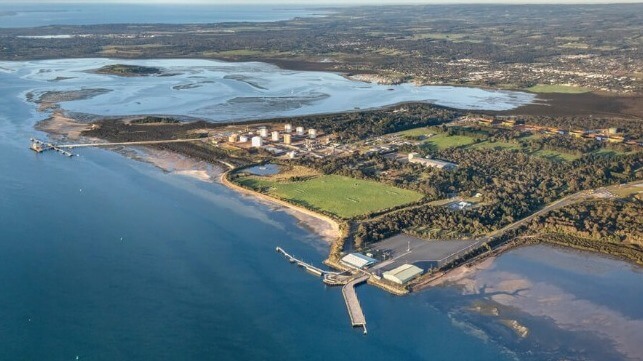Australia Rejects Wind Port Plans Due to Unacceptable Environmental Impact

Australia’s federal government rejected plans for the country’s first wind port saying that it would have “unacceptable impacts” on the environment and wildlife and in the process has also created a major challenge to the first planned offshore wind farms. The federal government reached its decision in mid-December and it became public today, January 8, with both the Port of Hasting Corporation which was to host the staging and assembly area, and the government for Victoria saying they would explore their alternatives.
Australia has only recently joined the global efforts to develop renewable energy from offshore wind farms. The country went through a lengthy process of setting the regulatory framework before selecting the coast off Victoria to host the country’s first projects. The area was selected in 2022 focuses on a stretch of the coast covering a little more than 12 miles in the Gippsland region near the town of Golden Beach.
Victoria has a goal of developing 2 GW from offshore wind by 2032 and 9 GW by 2040. However, one of the many challenges was a review that found none of the ports in the region were suited to supporting the development of large offshore wind farms.
Plans were developed at the state-owned Port of Hastings which called for dredging approximately 227 acres including a wetlands area. They planned to reclaim approximately 70 acres to create a large-scale staging and assembly point for the country’s first two offshore wind farms.

Rendering of the proposed wind port assembly and staging area (Port of Hastings Corporation)
The corporation that operates the port highlights the Port of Hastings was selected as the most suitable area because it has a large area of available land close to deep water channels. It also has channel capacity and is close to existing port facilities. The wind port was tied to the first two projects off Gippsland and Portland.
“The proposed action is likely to cause irreversible damage to the habitat of waterbirds and migratory birds and marine invertebrates and fish,” concluded Tanya Plibersek, Minister for the Environment and Water, in her statement of reason for the decision. She specifically cites the impacts of destroying or substantially modifying the wetlands. She also cites that the dredging would disrupt tidal flow in the area.
Under Australian law, the decision is a final ruling without a means for appeal. The state government or the port operator however could elect to take the federal government to court, but that would create a lengthy delay.
In their application for the project, they wrote, “If port facilities are not available to support the offshore wind industry in time for the development of the first offshore wind farm, growth in Victoria’s offshore wind sector will be curtailed due to a lack of suitable port infrastructure. Further, delays in port upgrades will lead to constraints for offshore wind developers, ultimately reducing the volume of renewable energy generated through offshore wind compromising Victoria’s clean energy milestones.”
The Port of Hastings Corporation acknowledged today, that it has received the decision. It reports that it is currently considering options. Similarly, the Victoria government said it would study the options. Speaking to the local media, government officials said they would not be deterred from moving forward with the plans for offshore wind energy.
Among the options they can explore are revising the proposal to address the concerns and resubmitting it. They could also look to relocate the operation to a new location but that would also require submitting a new proposal for review. Media reports are that the Star of the South wind farm, likely to be Australia’s first, was also assessing Geelong or Bell Bay in Tasmania as secondary sites for construction and staging of materials.
